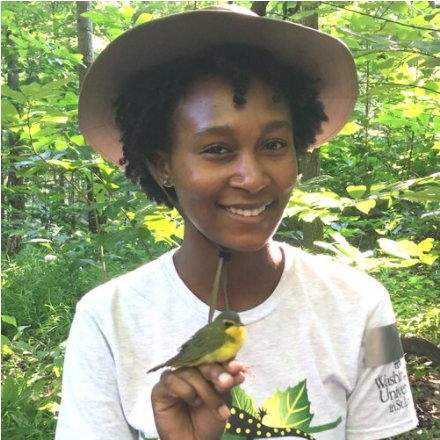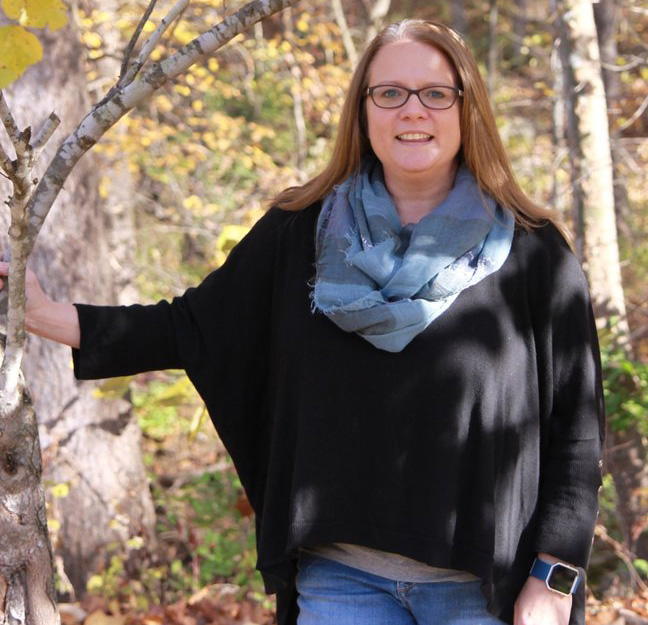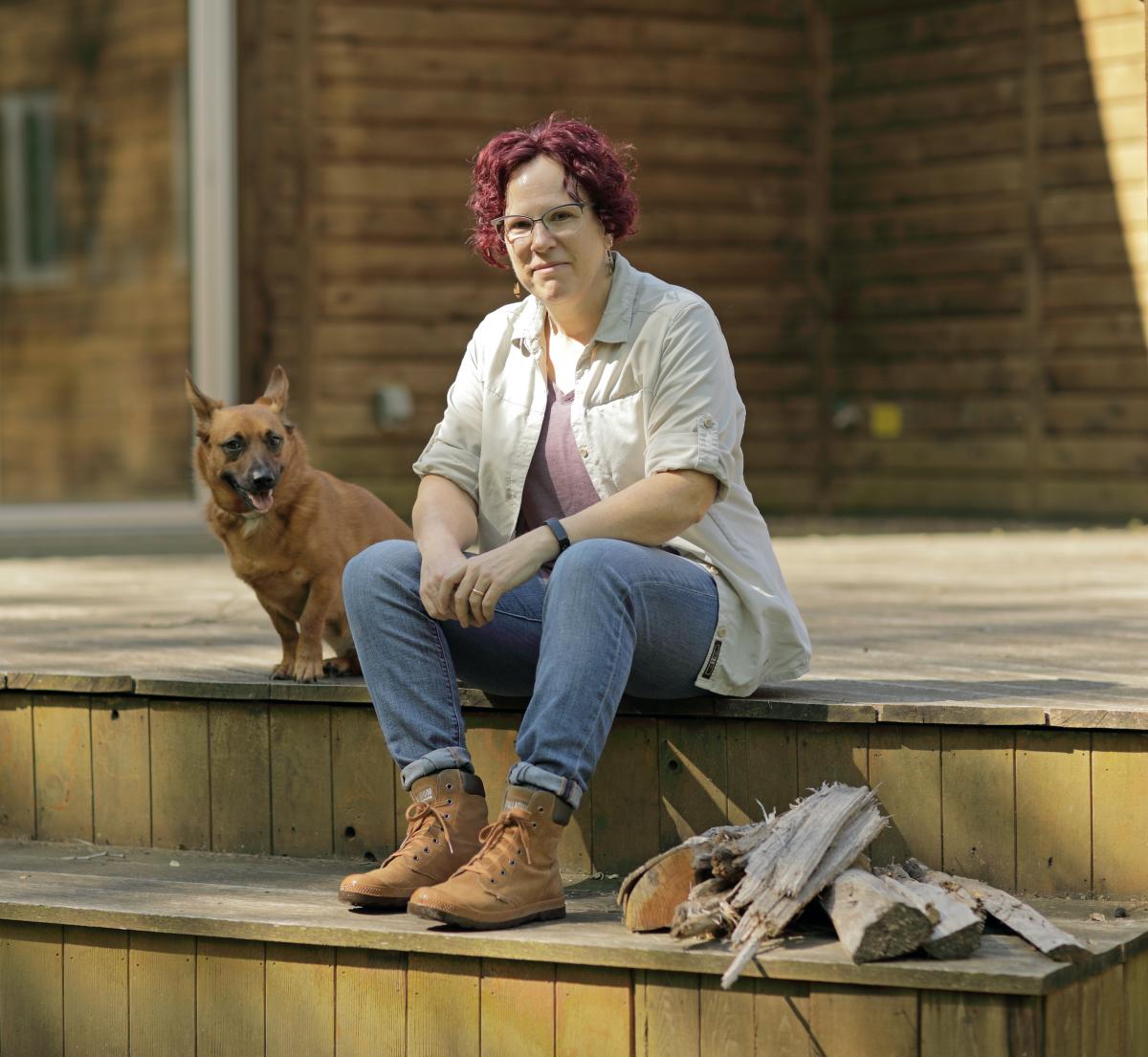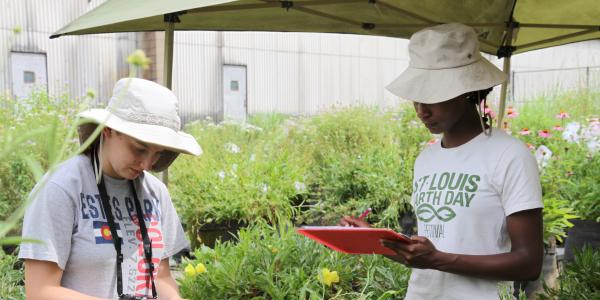Tyson Research Center’s summer programs welcome local students into hands-on environmental research, giving them real scientific experience, a chance to explore their interests, and a community to call home.

Rising senior Kayla Wallace is spending her summer studying crayfish. Wallace, an environmental biology major minoring in anthropology with an emphasis on global health and the environment, scored a highly competitive spot in the University of Michigan’s NSF-backed Research Experience for Undergraduates program, where she’ll spend eight weeks studying disease ecology and animal behavior in the freshwater crustaceans. But her path toward a career in scientific research actually began years before she enrolled at Washington University.
During her time as a student at Hazelwood West High School, in Hazelwood, MO, just north of St. Louis Lambert International Airport, Wallace participated in two summer programs at Tyson Research Center, WashU’s environmental field station. For more than a decade, these programs, the Shaw Institute for Field Training (SIFT), which is hosted in partnership with Shaw Nature Reserve, and the Tyson Environmental Research Apprenticeship (TERA), have been providing local high school students with opportunities to engage in authentic field research, explore environmental biology careers, and get paid to work with local researchers and their teams.
Like Wallace, before coming to Tyson, many students have little or no field experience. Tyson’s summer programs open the door to new experiences in biology, ecology, and related fields for aspiring young scientists. Even for those who don’t go on to pursue scientific careers, the time spent participating in field research and networking with a diverse group of scientists lays the foundation for openly and confidently exploring what they’re really passionate about.
“Through spending the summer at Tyson, performing research, and being plugged into a research team, I gained invaluable exposure that led me to decide that this is the research path I wish to follow,” said Wallace. “The time that I spent with my mentor, Dr. Solny Adalsteinsson, and Dr. Leticia Soares exposed me to the super interesting work of disease ecologists, and I've been exploring this interest in my own ways ever since.”
Those close relationships with mentors and research teams are key – and, in many ways, the challenges of working elbow-to-elbow in the field enable those relationships. Tight bonds form quickly when, for example, you’re out in the field dealing with ticks and mosquitoes together. The result is a tight-knit community where students are fully supported regardless of their background, experience, and personal identity.
To date, there have been 14 SIFT cohorts and 12 TERA cohorts, including 453 students from 81 different high schools in the St. Louis area. In Tyson’s high school programs, 37% of students identify as people of color, 62% are female identifying, and 2% identify as gender expansive or transgender.
Slowly but surely, Tyson’s summer programs are improving the pathway for diverse scientists working in field ecology and environmental research. Addressing this historical gap is central to how Tyson envisions their mission going forward.

“We want to help a diverse group of candidates feel like, ‘Oh, this is my home. This is a place where I’m going to feel supported, and I can thrive,’” said Tyson director Kim Medley.
That aim is baked into Tyson’s mission, and has been for many years. “We’ve been working toward the goal of making Tyson an anti-racist field station with an emphasis on broadening participation and providing opportunities for traditionally underrepresented groups, especially people of color,” Medley said. “We want to be on the forefront of transforming the environmental research field into a place where everyone feels welcome and can succeed.”
Beyond inclusion, another factor contributing to the overall success of Tyson’s high school programs is early exposure to scientific communities and career options, including professional development in addition to fundamental research skills.
“When we were starting these summer programs, we envisioned this as a way to provide authentic career exploration and a pathway into undergraduate science studies,” said Susan Flowers, Tyson’s education and outreach coordinator. “Students form their opinions about their career paths a lot earlier than we realize, so we needed to meet them at this transformational time when they’re getting their first jobs and starting to see what kinds of spaces they’d want to work in.”

Out in the field, students work closely with near-peer mentors as well as scientists at different points in the career pathway, who can provide accessible advice on everything from how to choose a college or major to how to plan and carry out specific research goals. Making space for these casual, open conversations is an essential part of Flowers’ work in recruiting, training, and retaining future generations of successful field scientists.
“We know there’s a lowering of barriers when they get to their next educational steps,” Flowers said. “They know how to get in the door and get placements in labs or research groups. They know how to present posters, and they’ve seen how science and science communication works up close.”
The students who participate in SIFT and TERA are equipped to dive into research from day one of their undergraduate careers – at WashU and beyond – and they’ve got options. Tyson encourages SIFT and TERA alumni to apply to their undergraduate fellows program, alongside applicants from across the United States and abroad. Students like Wallace who attend WashU can get a jump start on working with a particular lab, whose projects they might have been exposed to during their summer work at Tyson.
According to Flowers, the high school programs have had a profound impact on how undergraduate fellows are recruited and supported. And, the diversity in Tyson’s high school programs has filtered up into their undergraduate fellows. To date, 287 undergraduate research fellowships have been awarded to 19 cohorts of students. 28% of Tyson’s undergraduate fellows identify as people of color, 65% are female identifying, and 3% identify as as gender expansive or transgender.
Since her time at Tyson, Wallace has gone on to join the Strassmann/Queller sociobiology lab in the Department of Biology. Leveraging the experience she gained from SIFT and TERA, Wallace has been empowered to explore her interest in environmental biology and make the most of subsequent research opportunities.
“Through my Tyson experience, I was able to form a diverse network of ecologists whom I still interact with to this day and who've been incredibly supportive to me as I've navigated the world of research and ecology,” said Wallace.
Once she returns to WashU in the fall, Wallace will also be involved in starting the St. Louis Area chapter of the Ecological Society of America’s Strategies for Ecology Education, Diversity and Sustainability program (ESA SEEDS) and serving as its co-leader.
Medley and Flowers can list dozens of students who, like Wallace, found their calling at Tyson. Many have gone on to pursue careers in ecological research, and even more found a community that accepted who they were and gave them the support and skills they needed for future success.
“We’ve been in St. Louis, for St. Louis for years,” Flowers said, nodding to Chancellor Martin’s inaugural address.
“We’ve been working with schools around the St. Louis region, exposing students to environmental research and providing a pathway into STEM career exploration, but we’re small compared to the university as a whole,” Flowers said. “It’s really validating to see that the things we’ve been doing – simply because they’re the right things to do – are also being prioritized by our home institution.”




